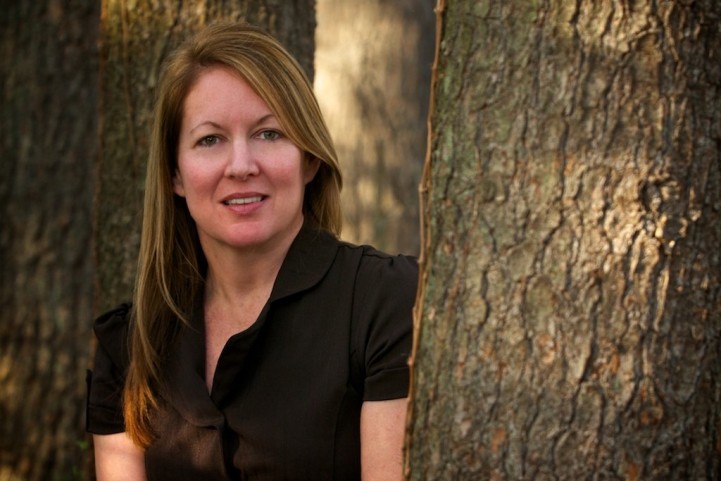|
|---|
Friday, February 18, 2011
Krysia Jopek's "Maps and Shadows" is an intimate, spare, elegantly written and deeply moving memoir
of the impact that the Soviet Union's slow-motion genocide against Poles had on
one Polish farm family. "Maps and Shadows" is not just a tearjerker;
it is not just a family saga; it is not just an incredible and inspirational true
story of survival in the face of impossible odds. "Maps and Shadows"
is also an important book. It offers key insight into a forgotten atrocity.
Adolf Hitler was not World War Two's only genocidal monster.
Joseph Stalin, America's ally, the man FDR called "Uncle Joe," and
"a Christian gentleman" was also a mass murderer. Poles were not
alone in their victimization at the hands of Stalin; there were also
Lithuanians, Ukrainians, and others. I ask, why is it okay for a student to
wear a t-shirt with a Soviet red star or other Soviet paraphernalia to class,
while a Hitler t-shirt or SS paraphernalia is taboo? One reason is that elites,
predominantly leftist, have underplayed Stalin's crimes. "Maps and Shadows"
will help to bring a buried story to light, and deepen understanding of World
War Two. Jopek's delicate poetry and prose will do the work that professional
historians have failed to do.
Hitler and Stalin both
invaded Poland in September, 1939, thus igniting World War Two. Both vowed to
destroy Poland and eliminate Poles. Stalin packed over a million Poles into
cattle cars and deported them to Siberian labor camps, with the goal of working
them to death. Forced to fell trees in freezing conditions, given inadequate
calories, many died. In August, 1941, tens of thousands of Poles were released
to fight in Anders Army, alongside the British. They fought with distinction,
especially at Monte Cassino. Pawns in a vicious game, Poles survived on their
own wits, in the cattle cars, in Siberia, in Iran, Italy, Africa, and England. Many
died and were buried in unmarked graves, their fate known only by the carrion
feeders who turned them to dust.
The opening chapter of
"Maps and Shadows" is told in the words of Helen, or Helcia, the only
girl in the family. The following chapter is told by Henry, or Henryk, Helen's
younger brother. Other chapters are written in the voice of Andrzej, the
father, and Zofia, the mother. Jopek's own poems are interspersed throughout
the chapters. This style of storytelling works well. The family is split up,
and mother and son, husband and wife, have no contact with each other, or even
certain knowledge of each other's existence, for long stretches. Each family
member gives voice to his or her own unique experience of exile. Henry focuses
on the process of growing into manhood while in the Gulag and then as a young
soldier, so starved he cannot hold up the uniform the Brits issue to him. Helen
grows from a girl and an older sister to a teacher of other refugees.
Polish Sybiracy, or Exiles to Siberia, from the Nineteenth Century source
The discontinuous storytelling style works for another reason,
as well. People crave narrative structure: a beginning, a complication, action,
resolution, and a happy ending. Atrocity does not respect human expectations.
Atrocity violates humanity in every way. One way is this: it violates our
order. This humble family, probably like the reader's own family, is rousted
out of bed in the middle of the night by Soviet soldiers with guns, terrorized,
humiliated, and dispossessed. The fleeting glimpse they have of their beloved home
as they are packed off to a white hell is the last glimpse of home they will
ever have.
There is no triumphant battle – only endless
days in a cattle car with no toilet and scores of other deportees. Meaning is
shattered. Normal time is meaningless. Father Andrzej and mother Zofia age
decades in this one deportation, as they see on each other's faces. Destinations
mean nothing – Helen is so ill in India she has no memory of India. People
struggle to create meaning, routine, in chaos and injustice: Gulag internees
gather mushrooms they don't immediately consume, in spite of hunger, but save
for winter. Polish refugees in Africa name their little encampment and go to
school, never knowing when or if they will be able to apply what they learn.
Siberian refugees, inured to temperatures of forty below, are suddenly plunked
down in Iran's unbearable heat; they go for a swim; one drowns in an utterly
unfamiliar menace: a sandstorm. Other refugees die from the blessing of food.
They had been in Siberia so long they could not digest British rations.
Humiliations never stop: after the Poles connect with their British commanders,
they are stripped naked and their possessions are burned. Their body hair is
shaved off. Martyrdom is not always an apt study for an oil painting; martyrdom
sometimes means traveling on a boat up to your ankles in others' vomit,
watching your fellow passengers' corpses dumped overboard. Yet humanity
remains, "Out of respect we didn't stare at the bodies." Those who
manage to survive often don't know why. Helen was unconscious for weeks, the
skin of her back worn away, and her vertebrae exposed. Yet she lived, while the
healthy man who swam before a sandstorm did not. You stop asking why.
Jopek's writing is always stoic. The book is quick and can be
read in one sitting. Readers should not be afraid to read this book. There are
no lingering, detailed accounts of cruelty or torture. Jopek's tone is
businesslike. This is what happened. Now, on to the next impossibility.
Poles and Poland are often misrepresented in popular,
journalistic, and scholarly discourse. There are complicated reasons for that
covered in my own book, Bieganski. Books like "Maps and Shadows" will
deepen and broaden the reader's understanding of one of the most cataclysmic
events in world history, World War Two.
Krysia Jopek photo by Shana Sureck
0 Comments:
Subscribe to:
Post Comments (Atom)
















